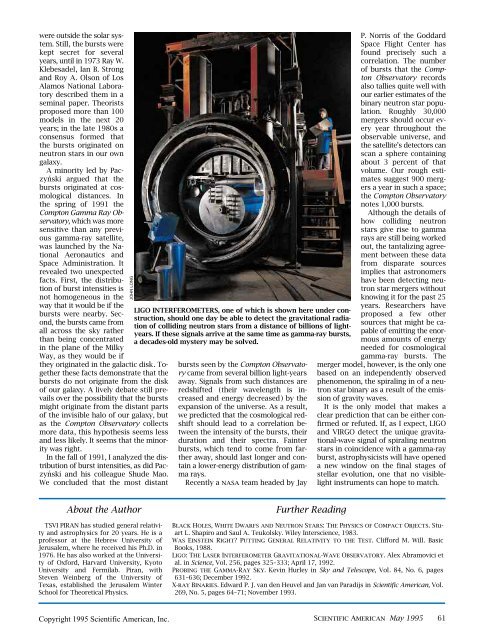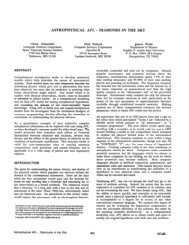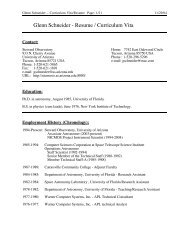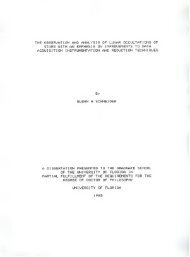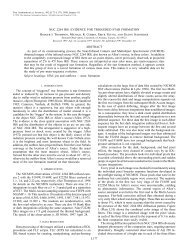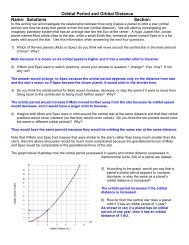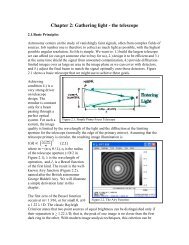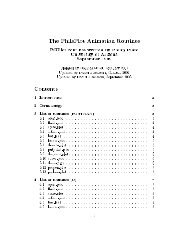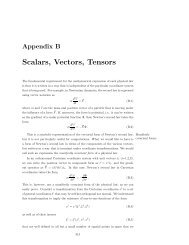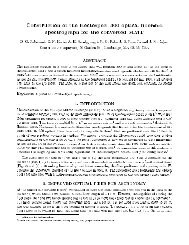Binary Neutron Stars - Scientific American Digital
Binary Neutron Stars - Scientific American Digital
Binary Neutron Stars - Scientific American Digital
Create successful ePaper yourself
Turn your PDF publications into a flip-book with our unique Google optimized e-Paper software.
were outside the solar system.<br />
Still, the bursts were<br />
kept secret for several<br />
years, until in 1973 Ray W.<br />
Klebesadel, Ian B. Strong<br />
and Roy A. Olson of Los<br />
Alamos National Laboratory<br />
described them in a<br />
seminal paper. Theorists<br />
proposed more than 100<br />
models in the next 20<br />
years; in the late 1980s a<br />
consensus formed that<br />
the bursts originated on<br />
neutron stars in our own<br />
galaxy.<br />
A minority led by Paczynski<br />
« argued that the<br />
bursts originated at cosmological<br />
distances. In<br />
the spring of 1991 the<br />
Compton Gamma Ray Observatory,<br />
which was more<br />
sensitive than any previous<br />
gamma-ray satellite,<br />
was launched by the National<br />
Aeronautics and<br />
Space Administration. It<br />
revealed two unexpected<br />
facts. First, the distribution<br />
of burst intensities is<br />
not homogeneous in the<br />
way that it would be if the<br />
bursts were nearby. Second,<br />
the bursts came from<br />
all across the sky rather<br />
than being concentrated<br />
in the plane of the Milky<br />
Way, as they would be if<br />
they originated in the galactic disk. Together<br />
these facts demonstrate that the<br />
bursts do not originate from the disk<br />
of our galaxy. A lively debate still prevails<br />
over the possibility that the bursts<br />
might originate from the distant parts<br />
of the invisible halo of our galaxy, but<br />
as the Compton Observatory collects<br />
more data, this hypothesis seems less<br />
and less likely. It seems that the minority<br />
was right.<br />
In the fall of 1991, I analyzed the distribution<br />
of burst intensities, as did Paczynski<br />
« and his colleague Shude Mao.<br />
We concluded that the most distant<br />
JOHN LONG<br />
LIGO INTERFEROMETERS, one of which is shown here under construction,<br />
should one day be able to detect the gravitational radiation<br />
of colliding neutron stars from a distance of billions of lightyears.<br />
If these signals arrive at the same time as gamma-ray bursts,<br />
a decades-old mystery may be solved.<br />
bursts seen by the Compton Observatory<br />
came from several billion light-years<br />
away. Signals from such distances are<br />
redshifted (their wavelength is increased<br />
and energy decreased) by the<br />
expansion of the universe. As a result,<br />
we predicted that the cosmological redshift<br />
should lead to a correlation between<br />
the intensity of the bursts, their<br />
duration and their spectra. Fainter<br />
bursts, which tend to come from farther<br />
away, should last longer and contain<br />
a lower-energy distribution of gamma<br />
rays.<br />
Recently a NASA team headed by Jay<br />
P. Norris of the Goddard<br />
Space Flight Center has<br />
found precisely such a<br />
correlation. The number<br />
of bursts that the Compton<br />
Observatory records<br />
also tallies quite well with<br />
our earlier estimates of the<br />
binary neutron star population.<br />
Roughly 30,000<br />
mergers should occur every<br />
year throughout the<br />
observable universe, and<br />
the satelliteÕs detectors can<br />
scan a sphere containing<br />
about 3 percent of that<br />
volume. Our rough estimates<br />
suggest 900 mergers<br />
a year in such a space;<br />
the Compton Observatory<br />
notes 1,000 bursts.<br />
Although the details of<br />
how colliding neutron<br />
stars give rise to gamma<br />
rays are still being worked<br />
out, the tantalizing agreement<br />
between these data<br />
from disparate sources<br />
implies that astronomers<br />
have been detecting neutron<br />
star mergers without<br />
knowing it for the past 25<br />
years. Researchers have<br />
proposed a few other<br />
sources that might be capable<br />
of emitting the enormous<br />
amounts of energy<br />
needed for cosmological<br />
gamma-ray bursts. The<br />
merger model, however, is the only one<br />
based on an independently observed<br />
phenomenon, the spiraling in of a neutron<br />
star binary as a result of the emission<br />
of gravity waves.<br />
It is the only model that makes a<br />
clear prediction that can be either con-<br />
Þrmed or refuted. If, as I expect, LIGO<br />
and VIRGO detect the unique gravitational-wave<br />
signal of spiraling neutron<br />
stars in coincidence with a gamma-ray<br />
burst, astrophysicists will have opened<br />
a new window on the Þnal stages of<br />
stellar evolution, one that no visiblelight<br />
instruments can hope to match.<br />
About the Author<br />
TSVI PIRAN has studied general relativity<br />
and astrophysics for 20 years. He is a<br />
professor at the Hebrew University of<br />
Jerusalem, where he received his Ph.D. in<br />
1976. He has also worked at the University<br />
of Oxford, Harvard University, Kyoto<br />
University and Fermilab. Piran, with<br />
Steven Weinberg of the University of<br />
Texas, established the Jerusalem Winter<br />
School for Theoretical Physics.<br />
Further Reading<br />
BLACK HOLES, WHITE DWARFS AND NEUTRON STARS: THE PHYSICS OF COMPACT OBJECTS. Stuart<br />
L. Shapiro and Saul A. Teukolsky. Wiley Interscience, 1983.<br />
WAS EINSTEIN RIGHT? PUTTING GENERAL RELATIVITY TO THE TEST. CliÝord M. Will. Basic<br />
Books, 1988.<br />
LIGO: THE LASER INTERFEROMETER GRAVITATIONAL-WAVE OBSERVATORY. Alex Abramovici et<br />
al. in Science, Vol. 256, pages 325Ð333; April 17, 1992.<br />
PROBING THE GAMMA-RAY SKY. Kevin Hurley in Sky and Telescope, Vol. 84, No. 6, pages<br />
631Ð636; December 1992.<br />
X-RAY BINARIES. Edward P. J. van den Heuvel and Jan van Paradijs in ScientiÞc <strong>American</strong>, Vol.<br />
269, No. 5, pages 64Ð71; November 1993.<br />
Copyright 1995 <strong>Scientific</strong> <strong>American</strong>, Inc.<br />
SCIENTIFIC AMERICAN May 1995 61


